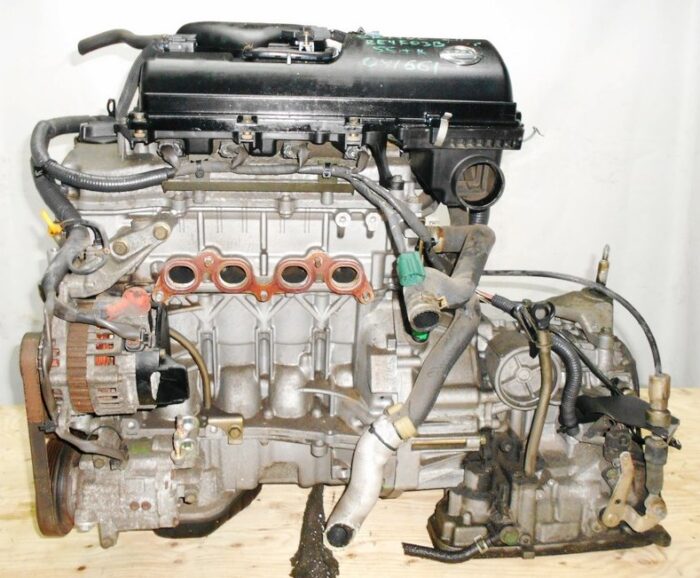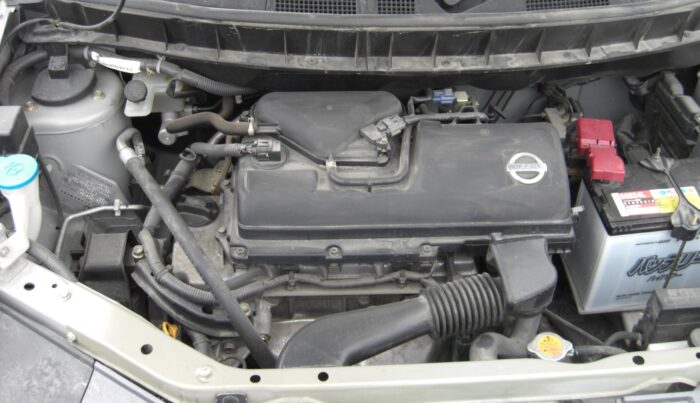Nissan’s CR14DE engine was a powerhouse powering vehicles from 2002-2013. An integral part of the range, this 1.4 litre motor is particularly well known to many due its installation in Nissan Note models across the globe – but it didn’t make strides alone! The powerful lineup also included two smaller siblings: CR10DE and 12CRD engines that helped forge an automotive legacy like no other during their time on roads worldwide.
Engine specifications for Nissan CR14DE 1.4 l
| Displacement | 1386 cc |
| Power system | Distributor Injection System |
| Engine power | 88 – 98 hp |
| Torque | 137 Nm |
| Cylinder block | Aluminum R4 |
| Cylinder head | Aluminum 16v |
| Cylinder diameter | 73 mm |
| Stroke | 82.8 mm |
| Compression ratio | 9.8 – 9.9 |
| Engine features | EGR |
| Hydraulic compensators | No |
| Timing Chain/Belt | Chain |
| Variable Valve Timing (VVT) | intake |
| Turbocharger | No |
| Oil capacity/Recommended oil | 3.4 l 0W-20 |
| Fuel type | Medium/Plus |
| Euro class | EURO 4/5 |
| Average lifespan | 220 000 km |
The catalog weight of the CR14DE engine is 122 kg
The CR14DE engine number is located on the block and gearbox junction
Fuel consumption CR14DE
Nissan Note with a manual transmission as an example (l/100km):
| City | 7.9 l |
| Highway | 5.3 l |
| Combined | 6.3 l |

What cars use the CR14 DE?
| Micra 3 (K12) | 2002 – 2010 |
| March 3 (K12) | 2002 – 2010 |
| Cube 2 (Z11) | 2002 – 2008 |
| Note 1 (E11) | 2004 – 2013 |
Problems & disadvantages of the Nissan CR14DE
- In the early years of production, occasional valve hang-ups were recorded
- The engine is picky about the quality of fuel and requires cleaning of injectors every 60,000 km
- The timing chain starts to stretch and rattle already at 140-150 thousand km
- Progressive oil consumption is common after 200,000 km
Tuning Nissan CR14DE
The Nissan CR14DE engine is a great project engine and can be significantly improved with modifications such as remaps, turbo improvements, camshafts, fuel injectors and exhaust upgrades.
Camshaft selection should be based on the driver’s needs; fast road cams increase power throughout the rev band while competition cams will raise high rpm power but reduce low end performance.

Tuning stages include: Stage 1 (remaps/piggy back ECU etc.), Stage 2 (high flow fuel injectors etc.) and Stage 3 (engine balancing & blueprinting/twin charging conversions).
Increasing air intake into the engine is important for more effective fuel atomisation – this can be achieved through plenum shape or size alterations or port work to heads.
Turbochargers are an efficient way of increasing top-end bhp but require careful consideration when selecting one due to potential lag issues at lower speeds.
Fuel injection rate should always account for 20% extra capacity in order to cope with higher demands from increased performance levels.
0 Comments